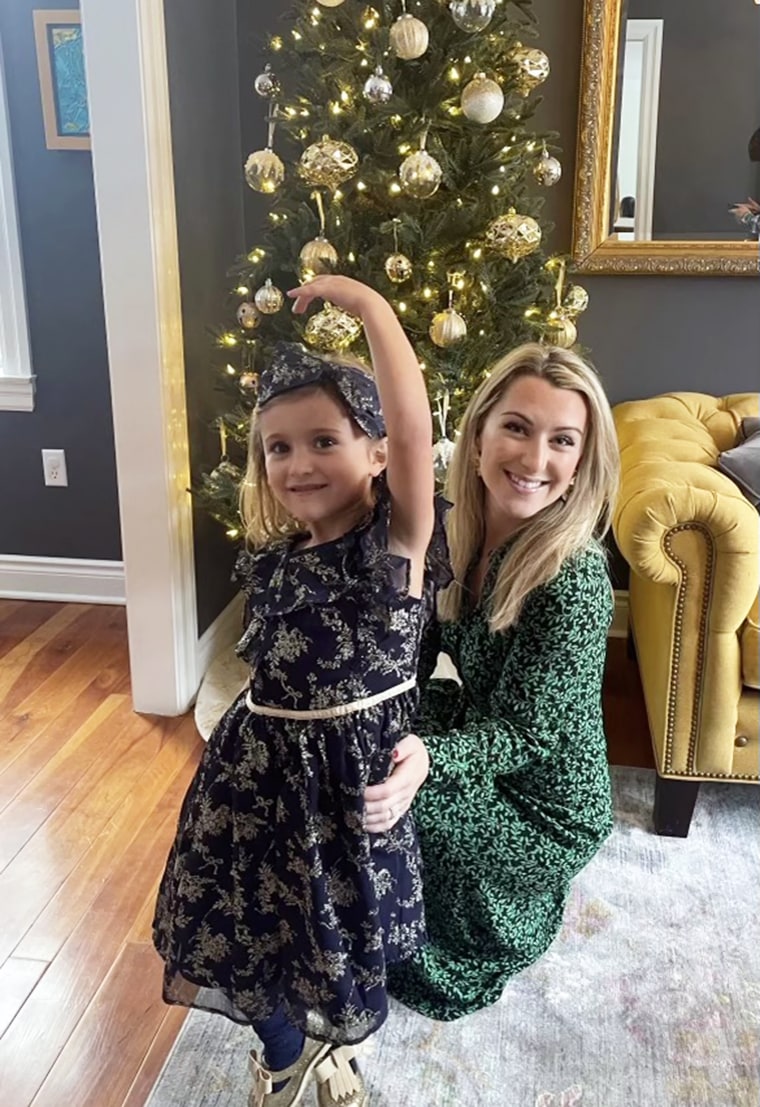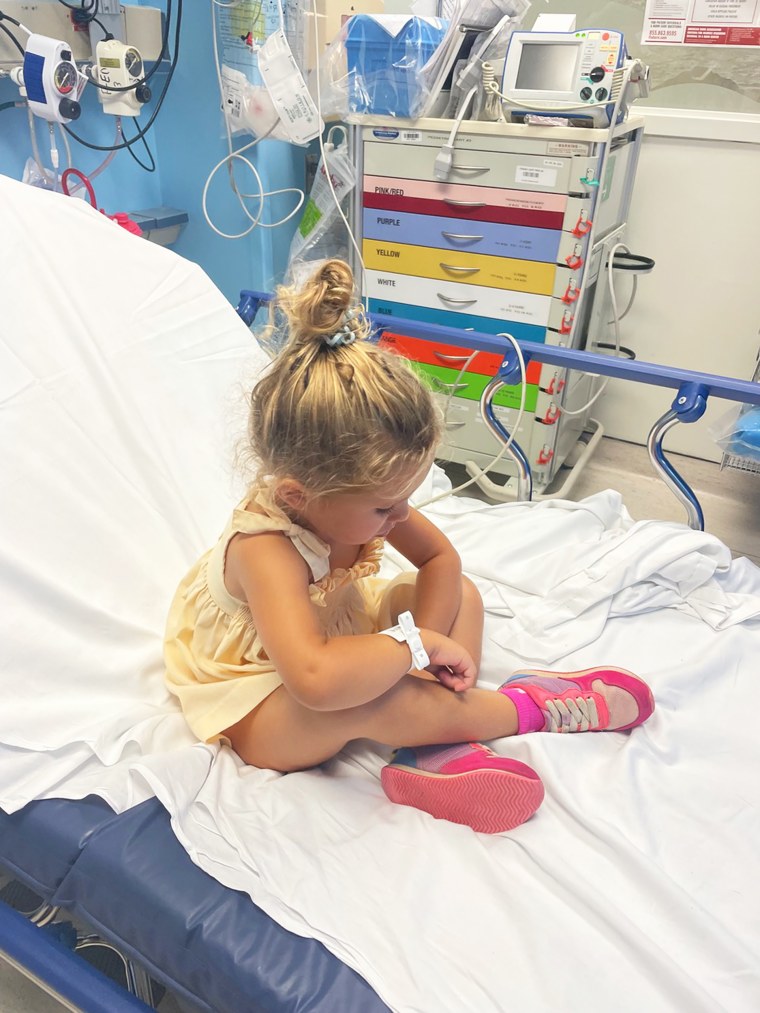We moved our family from upstate New York to West Palm Beach, Florida, in 2021, and excitedly descended upon sunshine and warmth with only our summer clothes and little family of four in tow. Without any family or friends nearby, we enrolled our two young children in a school near our downtown condo and almost immediately got to work familiarizing ourselves with the school and community.
I made a mental note of an image of a red shoe that popped up regularly: taped on classroom doors, on a pamphlet in the main lobby and spread throughout some other school materials. “What’s the red shoe all about?” I asked the Head of School. She told me to look up a nonprofit called Red Sneakers for Oakley and read the story on their site, but gave me the truncated version in passing, which was hard to do given the devastating nature of it. The shoes represented a favorite pair once worn by Oakley, a young boy who lost his life to an allergic reaction to nuts. He’d attended this very school at the time of his passing. Thereafter, his parents founded an organization to advocate worldwide for food allergy awareness and the use of epinephrine, something that was not used at the time of his passing, and that his parents openly wish had been.
I stayed up late that night reading everything I could about Oakley and his selfless, unbelievable parents. My throat was lumpy and I cried quietly looking at the photos they shared of their beautiful boy. Their Instagram account was a wealth of knowledge: top allergens, how and when to use epinephrine injectors (often referred to by one well-known brand name, EpiPen), signs of a reaction and more. This page was like a magnet for my brain — I wanted to know everything I could about how to prevent the tragedy they endured and was in disbelief of how little I knew about food allergies.

A few weeks later, my husband and I walked our kids a couple of blocks away for a holiday kickoff celebration in downtown West Palm. It was dark and late, so our kids, 3 and 5 at the time, were strapped into their double stroller. They begged us for ice cream and we agreed, joining other families in a long line behind a cute pink food truck selling “superfood ice cream.” I read the choices out loud, not mentioning to my toddlers that the ice cream was made of nuts so they didn’t judge it before they tried it, and finally ordered two cups of vanilla with sprinkles.
They took their ice cream while we pushed them to a better location near the tree lighting activities, snaking our way through thousands of other people there for the events. My daughter picked a sprinkle out of her bowl and immediately asked me to itch her finger. I complied. About 30 seconds later, after she’d scarfed down a few spoonfuls, I looked at her face and my heart stopped. “Is something wrong?” she asked me from behind her big brown eyes. And unfortunately, something most certainly was. Her face was distorted, swollen around her cheeks and producing red and white welts around her lips that she was ferociously itching.
I screamed, picked her up and yelled incoherently to my husband that we needed help. Oakley’s images flashed through my mind at lightning speed — because of his parents, I knew we needed epinephrine. Without having taken my husband through the food allergy education journey that I went on during my recent Instagram rabbit hole, he felt clueless as to what could be wrong. I know other parents who have been in moments of panic can relate to the reflection as a haze — I hardly remember the confluence of events or exactly how they transpired because of the blackout that can accompany tragedy.
My husband followed my cues, running alongside me and pushing our terrified son in the stroller while I held our daughter and screamed for help. To be honest, I don’t know what I screamed, but I know that it was enough to attract the person who saved our child. A man approached us with his wife and young son trailing behind. “Do you need an EpiPen?” he asked us, and then added, “I’m a doctor and my wife has one in her purse. Do you want me to administer it?” It was like I was having an out-of-body experience. I shouted an enthusiastic yes while my husband called 911. Some of this felt like hours and some of it felt like milliseconds, but her symptoms started to improve within a minute of the injection, and I was flooded with relief when the doctor told the paramedic upon the ambulance’s arrival that she was going to be OK.
I’ll never forget getting in the ambulance with my little girl, the whites of her eyes bright red and hives popping up along her blonde, curly hairline. The doors closed as I waved to my deflated husband and sobbing son. Who can he call to help us? I thought to myself. Dang, moving across the country had quickly lost its luster. We needed our village. I was scared, and we were alone. The firefighters in the ambulance were compassionate and knowledgeable. As a favor to her mom, I’d like to think, my daughter delivered some comic relief once she got her bearings. She looked a young, hunky fireman straight in the eyes and said her first sentence since the allergic reaction had happened: “I really like the way you look.” Exhale. She was definitely going to be OK.

We spent the majority of that night at the hospital, my husband joining us once he secured a babysitter from a nearby college to come be with our son. After our daughter was given Benadryl and steroids, and had spent hours under observation, we were sent on our way — to start the rest of our lives forever changed.
My husband drove to another town at 3:00 in the morning to the only pharmacy open to get our EpiPen prescription filled. I only knew to ask the emergency room physician for this because of Oakley’s parents. I wrote to them from the hospital parking lot, expressing gratitude, which didn’t feel like nearly enough. Epinephrine had saved our daughter’s life.
In the weeks following, bloodwork and skin tests at the allergist confirmed her food allergies, particularly to cashews, the main ingredient in the infamous ice cream treat, and forevermore, epinephrine injectors are an extension of our body. Life was challenging in the wake of this event. I went to therapy for a long time, and my already obsessive and anxious tendencies saw some of their worst days. Checking on our daughter, hammering home to teachers, caregivers and our visiting family members what she could eat and what she couldn’t felt like a new, stressful job that I never wanted.
Our daughter is a responsible advocate for herself, despite her young age, and still, she’s strapped with the worry of whether anything from a grape to a potato chip is safe. Oakley’s parents, who have experienced the worst, have devoted their lives to helping others. A doctor enjoying a holiday event with his family saw us in need and rescued us. No matter how painful the memory, it’s our turn. Familiarize yourself with food allergies even if your kids don’t have them — we did, and I am grateful for it every single day. As with most things, time does heal wounds, and knowledge is more powerful than fear.